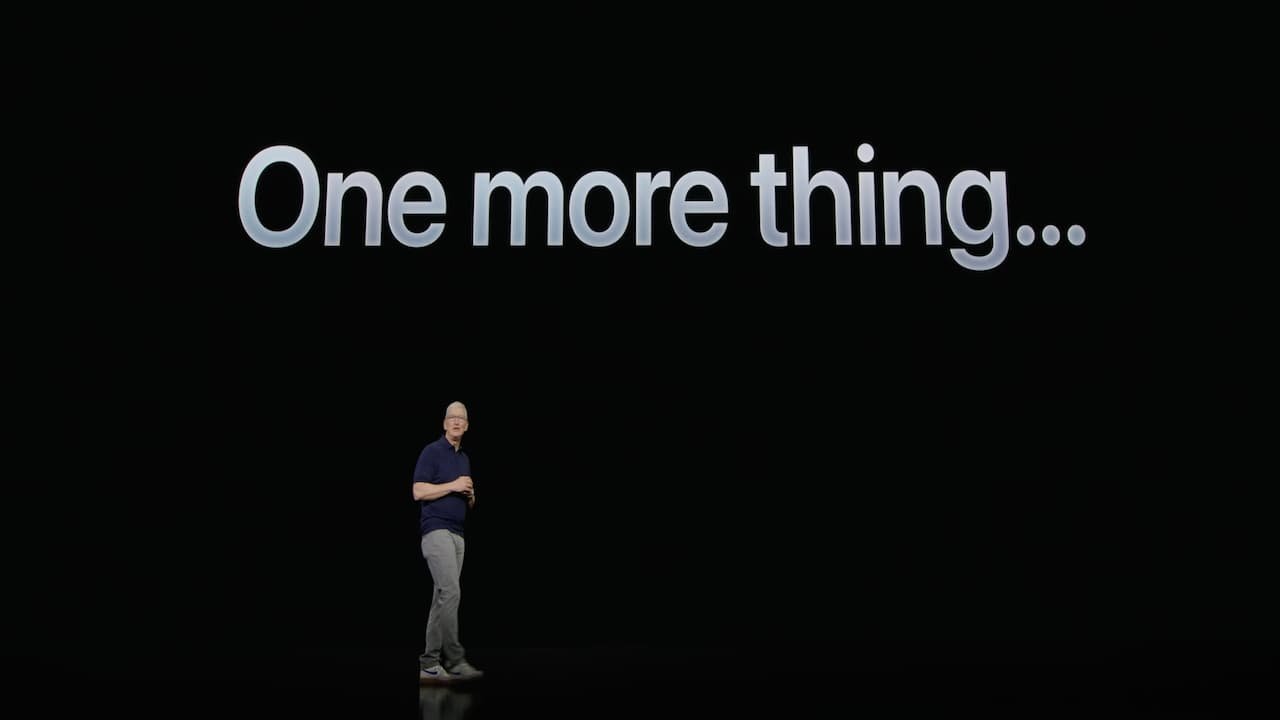This year's WWDC keynote was another shiny, practiced, and well-oiled presentation for a bunch of new things coming down the pipe. It's a clear sign that Apple's is probably done with the way it used to handle announcements — and that's sad.
The coronavirus pandemic changed a lot of things, but in-person events were always expected to go back to normal. For the most part that has definitely happened, but it sure looks like Apple's not quite ready to jump back on that particular bandwagon.
This year certainly seems to cement that reality, with the company actually inviting people to Apple Park to watch the same video remote folks would watch of the big unveilings. They could have done it live, had people sitting in seats in front of the executives as they brought out hardware to demo, both the devices and new features.
But we're probably done with all that now. Apple has chosen to move away from keynotes and events that may invite potential issues, where the hardware and software might not work as intended and therefore raise concerns before anything launches.
Embrace the chaos
One can't really blame Apple for this. This is a company that, even when things go right on stage for everything else, they can get lambasted for their "courage."
But there's entertainment in embracing the chaos, letting there be some room to see how these devices and software work in the real world — even if they're all still being tested. Apple might be in the entertainment industry these days, but apparently it's not willing to risk showcasing its features and hardware not working exactly how they should anymore.
It's not like there are a lot of examples to pull from. It's certainly not a secret these days that the original iPhone was basically working on a wing and a prayer when Steve Jobs demoed the device for the first time on stage.
Jobs also ran into an issue with Wi-Fi of all things when he unveiled the iPhone 4. One demo unit wasn't able to load content while connected to Wi-Fi, so he tried to switch to AT&T's 3G network — which also failed. It was a genuinely funny moment that Jobs made the best of, and even got feedback from the crowd.
Years later, Craig Federighi would step up on stage to showcase Face ID in the iPhone X with a "failed" demo. He tried to unlock the device with just his face, like the feature is supposed to, but ultimately had to resort to using a passcode to get in.
There was laughter and plenty of finger pointing, but, in the end, it all worked out.
Thing is, in both those instances it actually wasn't the hardware failing. For the iPhone 4 there were just too many devices in the theater connected to Wi-Fi, and therefore the iPhone had trouble loading content.
And, the Face ID fail was actually the device working as it should, as too many people had been using the demo phone and Face ID kept trying to authenticate with Federighi's face. That led to the device demanding a passcode for security.
More of a refined look
That's probably the reasons why Apple wants to move away from the live events. Because other issues can crop up, which can weaken the demo of whatever new thing they are showing off.
Imagine Tim Cook on stage, wearing the Apple Vision Pro while it's connected to its portable battery and it just doesn't work. The battery's dead because someone forgot to double and triple check. He's up there with a dead unit, trying to talk about how great it is and how helpful it is.
Instead, Apple practiced and worked it all out in predetermined and controlled conditions. Everything was designed to work exactly the way it should, with pre-recorded demos and everything in between.
This is great for Apple, because it shows the strengths of what's to come — but it does remove some of the fun, some of the entertainment. Not that anyone wants everything to fail in some way or another, but it is kind of sad to see that live events from Apple might have already gone the way of the dodo.
Plus, it's especially strange when Apple's primary competitors, Google and Samsung, are out there doing live events again. Apple is a company that touts its connections to people, but apparently live keynotes don't fall under that umbrella anymore.
 Evan Selleck
Evan Selleck








-m.jpg)






 Charles Martin
Charles Martin
 Wesley Hilliard
Wesley Hilliard
 Stephen Silver
Stephen Silver
 William Gallagher
William Gallagher

 Marko Zivkovic
Marko Zivkovic
 Andrew Orr
Andrew Orr
 Amber Neely
Amber Neely









44 Comments
I would disagree with "over-produced" part, in many places audio needed cleaner cuts
Actually, I prefer these scripted, pre-recorded presentations to the old live events. I think they are able to present a lot more information more clearly and concisely than doing a live event allows. You also avoid wasting time with glitches that have nothing to do with the product or presentation. (Like Craig Federighi's "failed" Face ID demo, which only "failed" because the feature was working as designed and had been disabled because of stage hands handling it and looking at the screen before the demo.) The demos and presentations are also better and more compelling since they don't have the restriction of doing it on a stage in front of a live audience but can be more creative with it.
If one were attending in person, a live event would be more exciting, but how many of us actually ever have the opportunity to attend in person? And, frankly, even the live events were scripted and rehearsed, and the only person who was ever going to go off-script was Steve Jobs, so we aren't really missing anything in that regard. (I was at the WWDC right after Jobs returned to Apple, and I wouldn't have missed the Q&A session he did there for the world (the one where he talked about taking the Newton out back and putting a bullet in it's head, among other topics) but those days are, sadly, long behind us.)
There is some irony, though, that the Steve Jobs Theater was designed and built to host live events and they stopped doing them almost immediately after it was "opened".
Disagree with the bellyaching. These pack in more relevant information in less time. Why on earth should any of us care that they’re more scripted!? Talk about hand-waiving.
Was fortunate to attend the first shareholders meeting held in the Steve Jobs theater February 13, 2018. Plenty uses for the theater, including large employee gatherings, which apples has held in recent years.
Having pre-recorded presentations like WWC allows for more information to be conveyed in precise, concise fashion, using graphics to help illustrate all the technical reformation. Live is good but pre-recorded is better. Just like meetings Zoom, Webex, FaceTime etc. is the new norm one of the benefits of the pandemic. Can’t wait to attend a zoom meeting using Vision Pro.